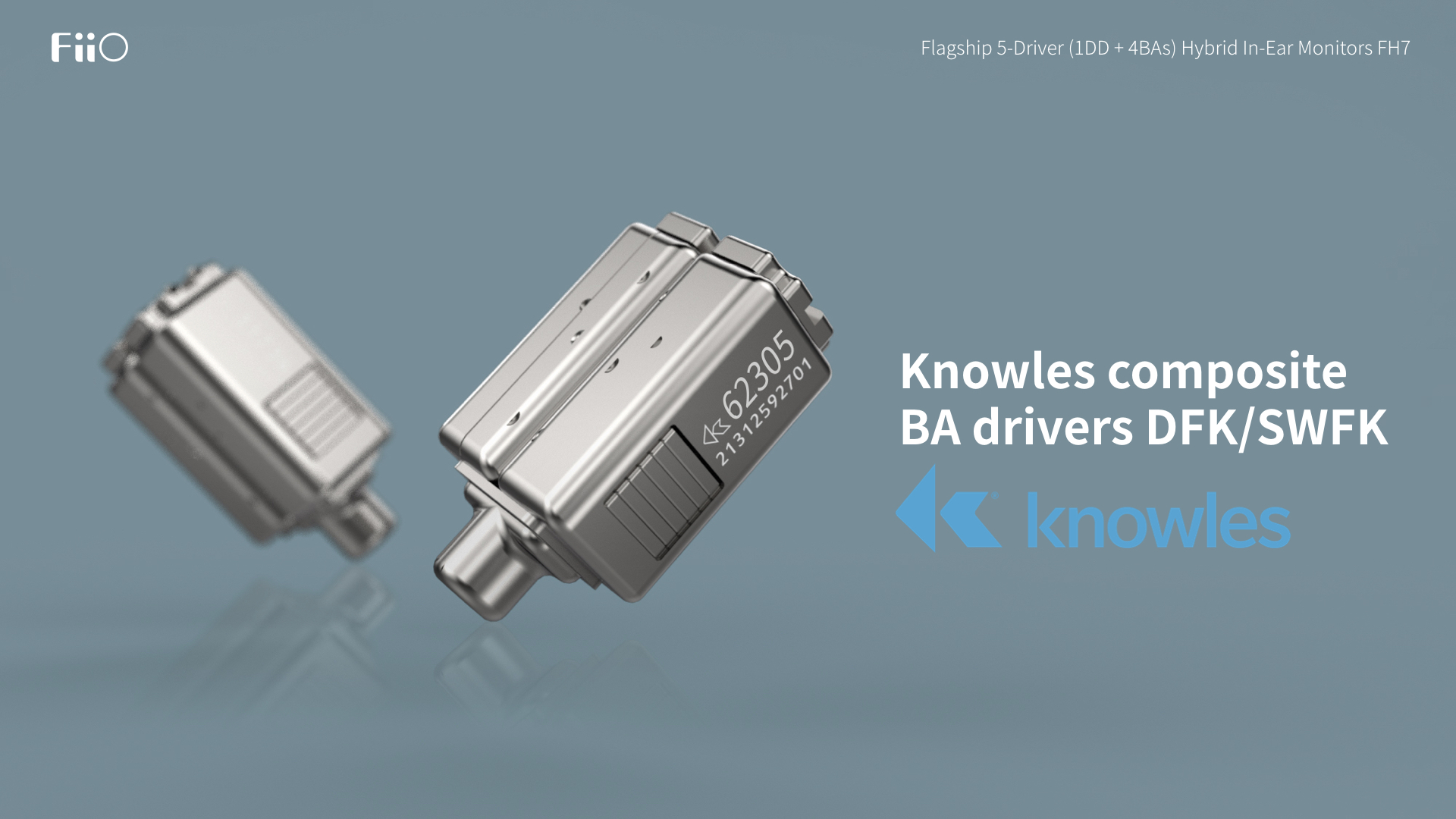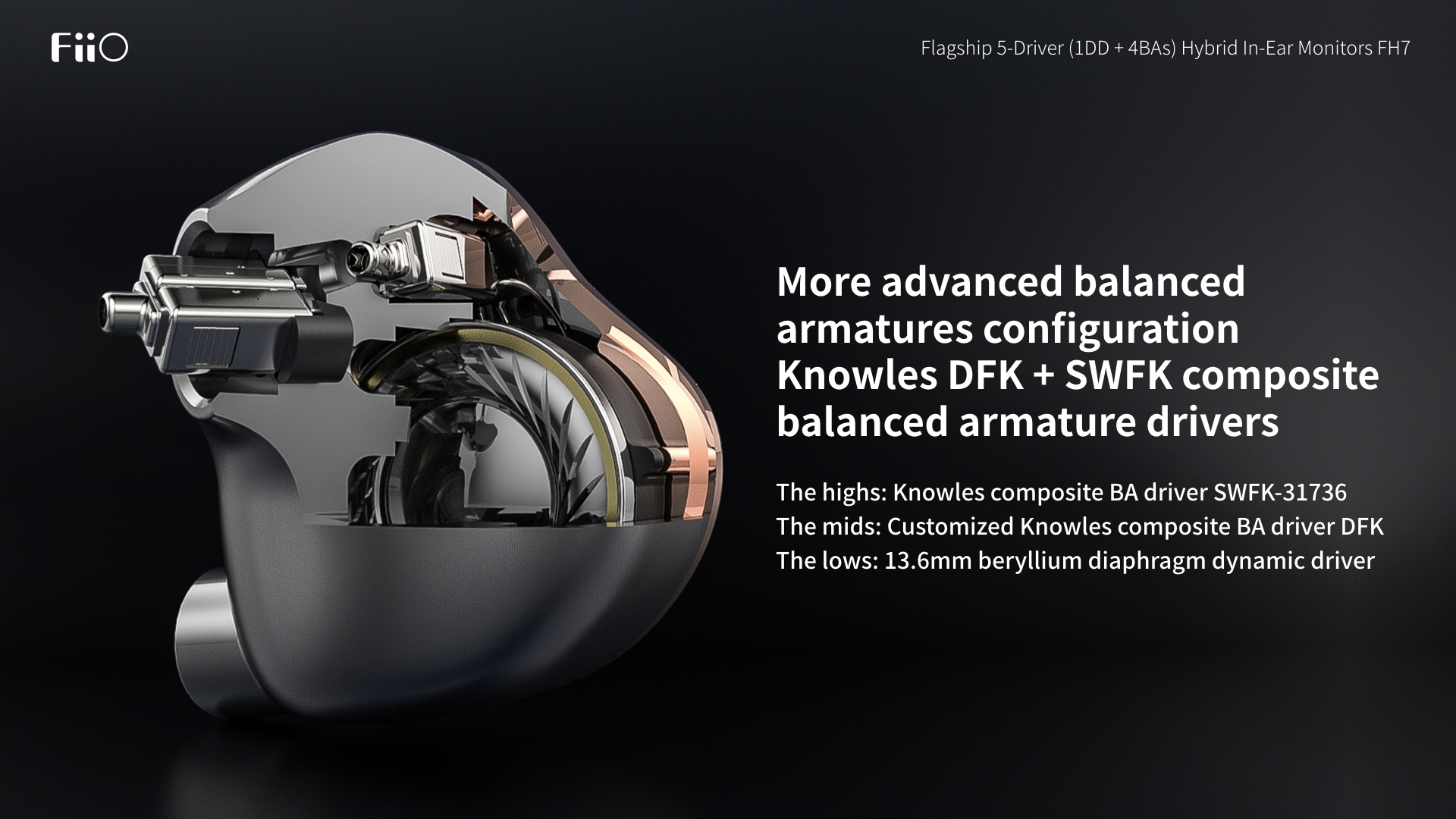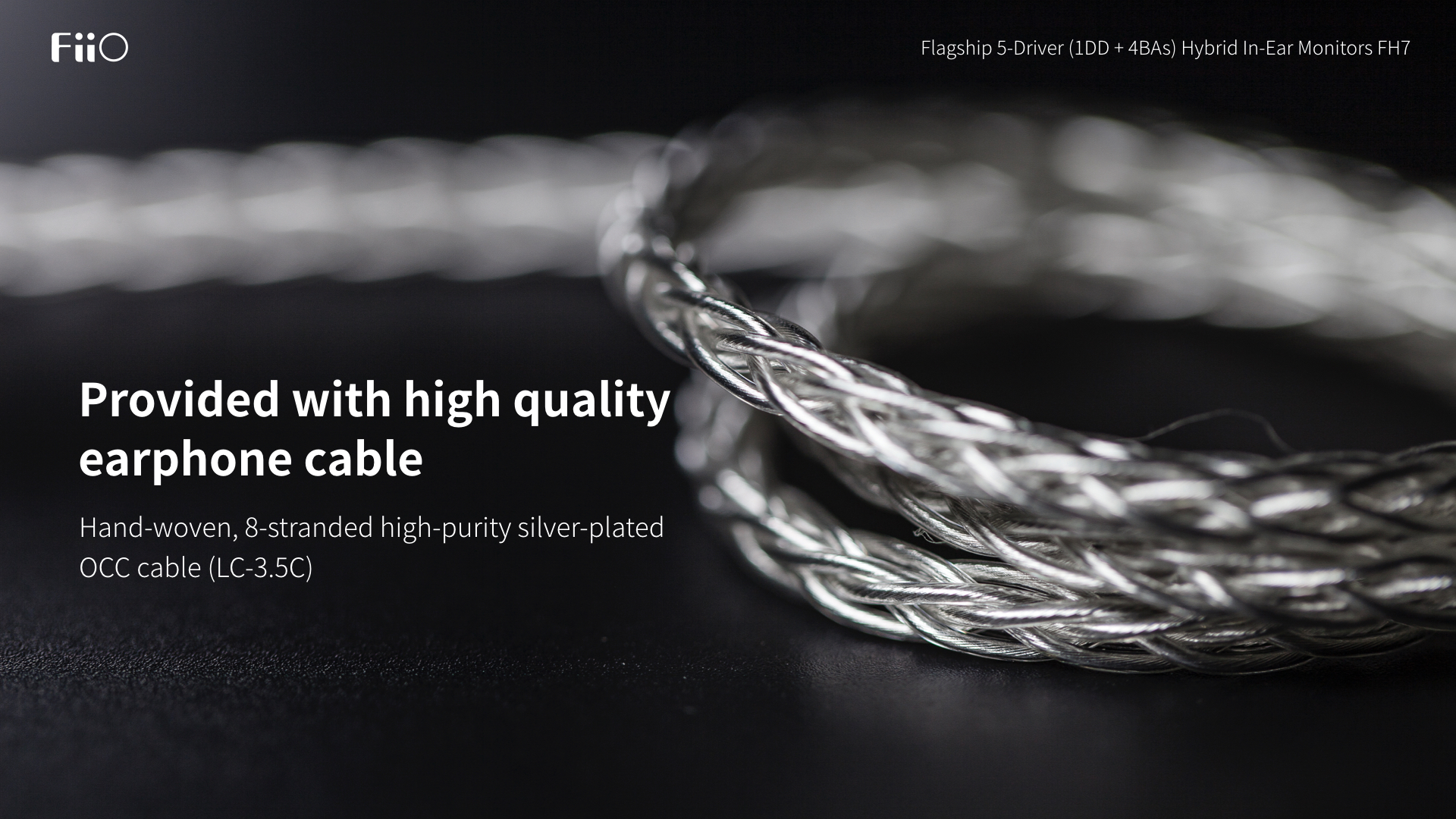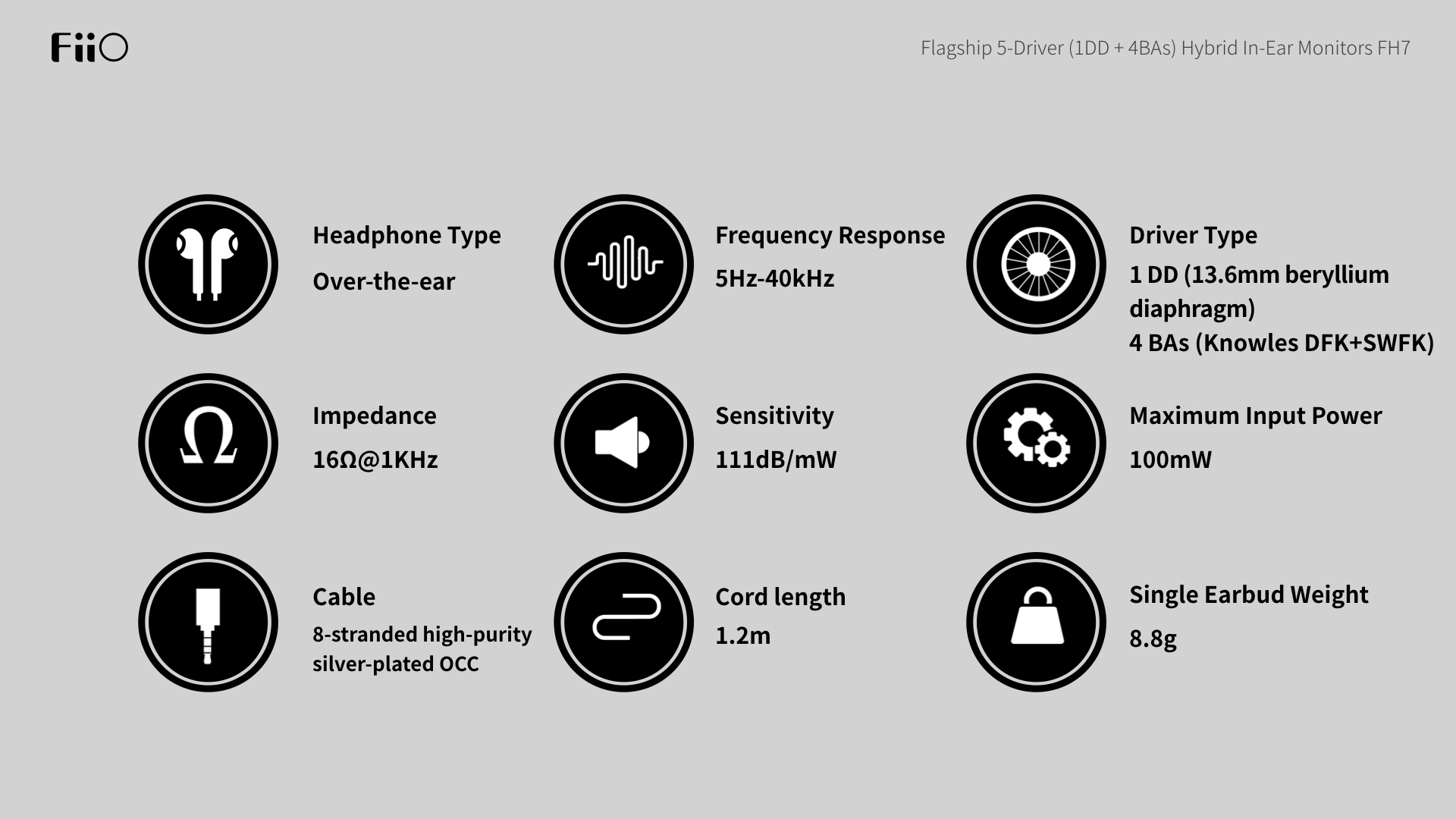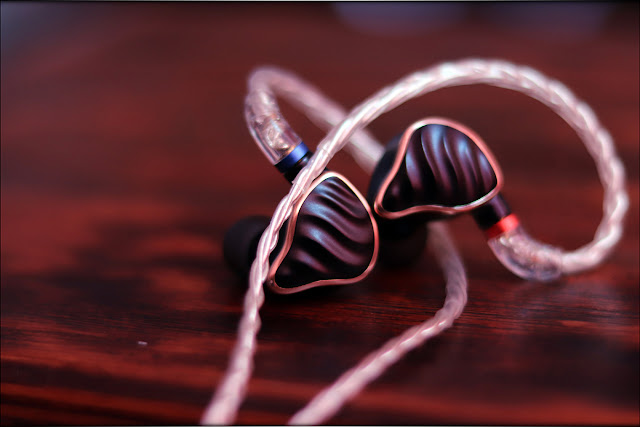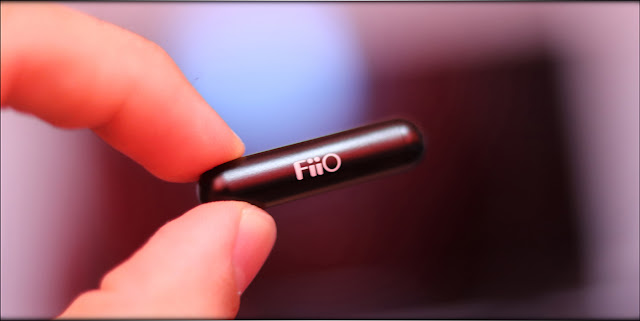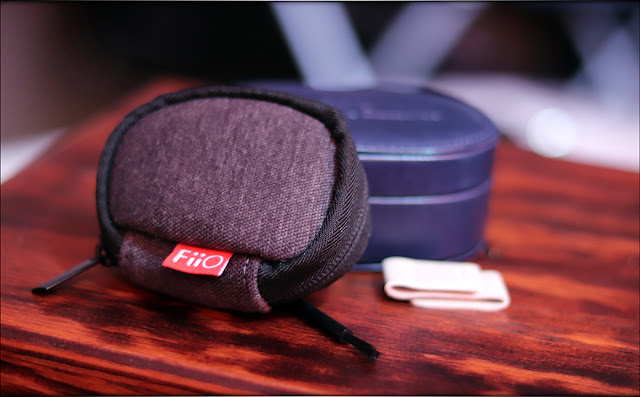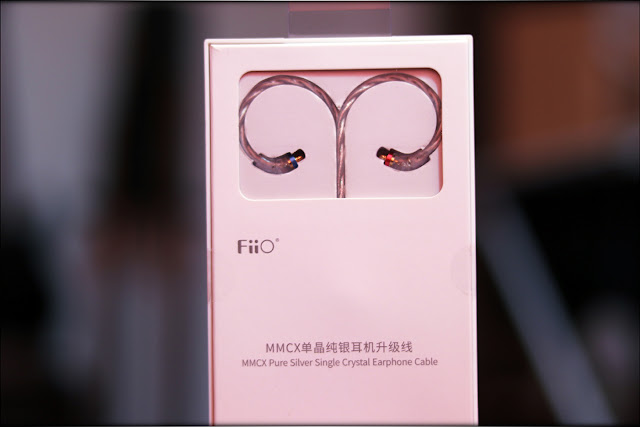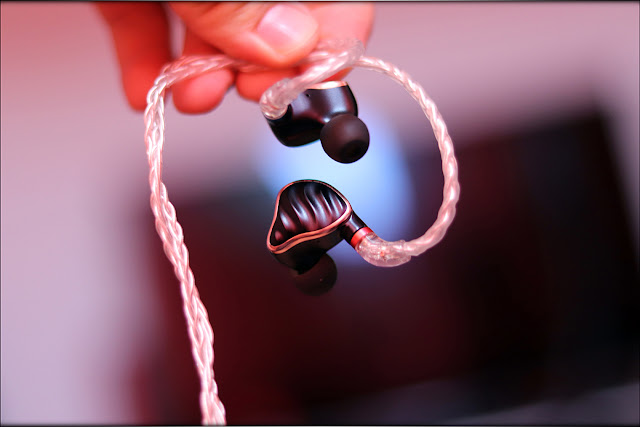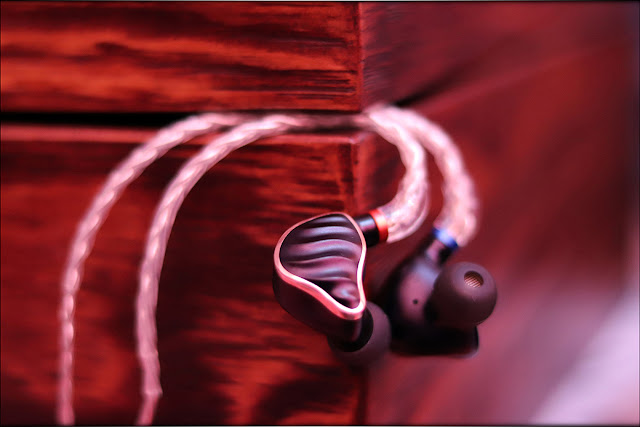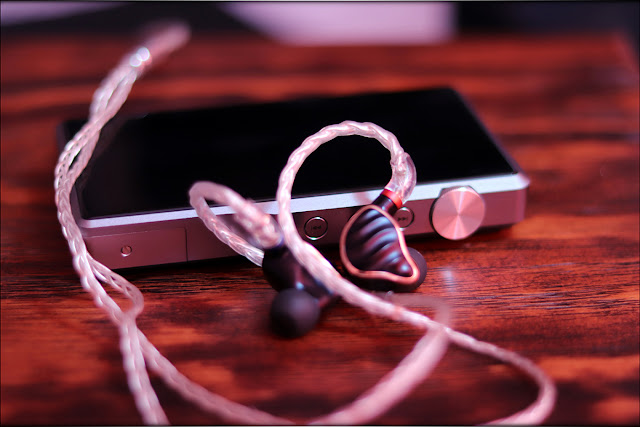FIIO FH7 REVIEW: The End Game Wonder
SOUND: 9.5/10
CONSTRUCTION&DESIGN: 9/10
PACKAGING&ACCESSORIES: 9.5/10
VERSATILITY: 10/10
VALUE: 9/10
FIIO is the best know
Chi-Fi company and they’ve been around for more than 10 years.
Founded in 2007 by creating the first ultra-portable amplifier (E serie), they never stop pushing the boundaries of portable audio gear. At first, they concentrate their effort on creating budget-minded portable audiophile gear like tiny AMP or DAC-AMP and logically begin to create DAP too.
This wasn’t enough so they jump into audiophile earphones territory too, but they weren’t the only Chi-Fi company now and competition sure was harder than DAP or DAC-AMP world. Nonetheless, they proved to be very capable to engineer great sounding IEM, especially with hybrid models like F9 PRO that got good reception among audio enthusiasts.
Just lately they seem to try to compete with high-end audiophile IEM by making their hands into multi balanced armature iem like the FA7 quad-BA or hybrid multi drivers IEM like FH5 and FH7. Both FA7 and FH5 are still budget-friendly for the quality of drivers and material used, but the FH7 being their flagship model, the price takes a jump at around 450$.
At this mid-tier price, FIIO enters the real high-end world were critical audiophiles expect top of the line tuning. You can’t fool anybody in this price segment, especially when your company is known to deliver high-value products.
The FH7 uses a very big 13.6mm Berylium driver with 4 Knowles balanced armature, as well it has a changeable nozzle filter to tune the sound by adding treble or bass. This is seriously TOTL promise, but will this big dynamic drivers will ruin everything delivering an immature bassy sound? Absolutely not. FIIO tune the FH7 to be ultimate all-arounder End Game earphones and let me tell you they sure achieve the goal of delivering a near neutral sound with perfect balance.
But does it justify the 450$ price tag? Let’s give you a hint: more my review is long to write, more it mean I enjoy listening to the IEM. My FH7 review is the longest I ever wrote.
SPECS
| Earpiece Design | In-Ear (Intra-Aural) |
| Earpiece Connection / Wearing Style | Wired |
| Driver Type | Dynamic, Balanced Armature |
| Driver Size | 0.54″ / 13.6 mm |
| Diaphragm | Beryllium |
| Impedance | 16 Ohm |
| Frequency Response | 5 Hz to 40 kHz (Wired) |
| Sensitivity | 111 dB at 1 mW |
| Maximum Power Handling | 100 mW |
PACKAGING&ACCESSORIES
When you present your product as flagship, it should have an impressive presentation with great care to details so the full purchase experience feels respectful towards the consumer reception. FIIO sure gives a lot of effort to achieve a luxurious product experience and the whole
UNBOXING process shows it well. The FH7 boxing is classy, sober, and practical. It comes in a big box that has a cardboard door to open. When opened, the IEM are beautifully presented and star of the show. At their side, you have the little sound filter carrying case with descriptive of their tuning. When you pull off the first package cover, the presentation is again well done with a very informative ear tips display (and holder) that have nothing less than 14 different pairs of ear tips, including real Spinfit, bi-fangle, silicone and memory foam with description under it like Vocal, Balanced, Bass so you know how it will affect the sound, this is a very welcome display! The included carrying case is very fancy too, made of real leather and with enough space in it to include an extra cable or another IEM or…well, another carrying case as included with the FH7. Yep, the number of accessories is near over-kill, but I would have preferred an extra balanced cable than an extra carrying case. Or a cable with a changeable jack. Anyway, we are already very spoiled with FH7 accessories.
CONSTRUCTION & DESIGN




The FIIO FH7 are very elegant looking earphones with carefully crafted housing made of extremely sturdy aerospace aluminum-magnesium alloy. The body has a good weight to it but it is still light for its rather big size. The sandblasting finish isn’t prompt to easy scratching, which is very important for IEM of this price and another proof of care to durability from FIIO. This is full of alloy housing without any plastic path. All parts are perfectly fitted and their no sign of craftsmanship issue. The backplate have curvy ripples that make an interesting light effect and is pleasant to touch, as well, it gives a little grip for IEM placement in your ears. The golden alloy contour of the back is shinny and very appealing to the eye. The mmcx connectors are embedded solidly into the body without any fragile part that can affect durability. The nozzle is full metal and nozzle filter feels solidly screw when used, without any loose part as it can happen with cheaper built. All in all, the FH7 has awesome built that surpass what you can expect in this price range.
The body is quite big and will perhaps not fit very small ears, but the angled long nozzle should permit an easy and comfortable fit for the vast majority of humans anatomy. Due to its consequent weight, it’s mandatory to use a cable with ear hook so their no risk the earphones slip off your ears.
The included cable does have an ear hook for good reason, and when I try other cables without any, it not completely fall off my ears but has a less secure fit and was a little shaky. The quality of the cable is impressive and look very durable. It’s an 8 strands silver-plated cable with solid mmcx connectors and L metal jack. Wearing this cable, I never encounter any discomfort issue with the FH7 even after more than 3 hours of constant use.
DRIVEABILITY
The FH7 are very easy to drive, they have an impedance of 16ohm and high sensitivity of 111db. The fact impedance isn’t too low makes them not overly sensitive to audio source but I still find them to sound crisper with low impedance output. Strangely, they pair better with clear DAP or DAC-AMP that deliver reference type of sound with high dynamic and black background. Both my Ibasso DX90 and Xduoo X20 sound excellent with the FH7, but too powerful amp can warm tonality and affect overall resolution.
ISOLATION
Passive noise cancelation is quite good and you will hear only your music even if listening at low volume. Due to top housing venting hole, it have some noise leakage but nothing intense.
CABLES PAIRING
The FH7 are very sensitive to the different type of cable used. It mostly affect timbre and to less extend tonality, which means it affects transparency, resolution and soundstage as well. This is subtle sound difference because overall tonality stays the same, but for trained ears, going from full silver-plated cable to full copper do offer a very audible different sound
color.
STOCK 8strands 19cores Silver-plated copper cable is great and enlights the technicalities of the FH7, it offers the clearer, sharper, and more transparent sound. This mean it offer the brighter tonality and thinner timbre too. This do extend soundstage deepness as well and you have more micro-details, but the highs feel the more metallic and overall sound is colder. I didn’t fall in love with the FH7 with stock cable.
AUDIOSENSE 8strands 19cores 6N crystal copper cable offers the warmer and thicker timbre, with slight bass and mids boost. The tonality is the more natural and gone is the extra emphasis on treble. Highs seem fuller and less edgy. Transparency is less good due to more opaque timbre, so soundstage is less deep but gains a bit of wideness. Vocal sounds more present and lusher. I really like this cable for extra
romantic musicality.
NICEHCK 16strands Mixed Copper and Silver-plated cable is perhaps the best of both worlds. Sure, construction is not the best especially due to rather loose MMCX connector but it offers the biggest tallest soundstage with nearly similar deepness than FIIO cable. Timbre is thicker and more natural but with enough transparency to keep a great layering. Treble is crisper than full copper cable but not too bright or cold. Vocal are less thin and dry than the stock cable.
FINAL AUDIO 4 strands High purity OFC silver plated cable is very similar sounding to stock cable but with a more aggressive dynamic and attack and brighter upper highs. Soundstage feels slightly deeper and vocal more upfront. Bass is tamed a bit. It offers the sharpest tonality. You got bonus sibilance in vocal too. It’s my least favorite cable pairing.
SOUND FILTERS
RED (BASS BOOST)
It should have been called sub-bass boost, as this filter tends to boost sub-bass rumble and presence, making overall bass and lower mids warmer and mid bass less punchy and well defined. Here we have a more boomy bass with more resonance, this warm whole tonality by veiling it a little when bass occurs. Clarity is less sharp and soundstage less deep. Male vocal can gain in presence and fullness, as well as low register instruments like the acoustic bass, Basson or organ can be more forwarded. TREBLE seem a bit more relaxed too. Good for slow jazz and some pop, but technically inferior to the 2 other filters.
BLACK (REFERENCE SOUND)
The best tonal balance of all filters, and the favorite of everyone (including myself) from what I read. The soundstage is the wider-deeper. Imaging is accurate from low to ultra highs. Bass is controlled, punchy, and full-bodied with excellent separation. MIDS are full, crisp and precise. TREBLE is vivid, natural, and not overly bright. Neutral with a hint of extra dynamic.
GREEN (HIGH BOOST)
Yep, we got a nice highs to boost here, from about 5khz to 10khz. Brighter it is, but this might be a blessing for the treble head that wanna taste all micro details and instrument textures of FH7. Highs are airier with longer resonance, they are pushed forwards and tend to stole mid-range presence a bit. It’s still well balanced and not overly peaky, but not as well balanced as Reference filter. With very busy tracks the highs can feel shouty sometimes too. I tend to use this for instrumental music like folk, classical quartet, some indie.
SOURCE PAIRING
The FH7 does not love high impedance output, so they will sound the best with DAP or DAC-AMP that have lower than 0.1ohm. To take full advantage of the high resolution they can offer, your audio source should have the blackest background possible and not be too bright, grainy or aggressive.
XDUOO X20 sounds great with the FH7 but with the stock cable, it can be a little too cold and thin, the soundstage isn’t as holographic as with more dynamic audio source.
When hooked to JDS LABS ATOM, the sound became slightly warmer-thicker and less precise in the attack, soundstage gain in wideness but lack clear deepness of X20 output.
IBASSO DX90 is a great pairing, it tends to add some bass weight and offer ultra-crisp imaging and add nice edge to the definition without making it sound harsh. Treble is more vivid and sparkly too.
FIIO BTR5 thickens the sound and adds nuance to the textures of timbre, it do not sound as transparent as X20 or DX90 but offers a more natural tonality.
TEMPOTEC SONATA HD PRO improves soundstage deepness even more but make the sound a little more neutral and calm bass impact. The treble seems more delicate and airy, slightly more metallic and sparkly. It’s an odd pairing.
SOUND
Gear used for testing: Ibasso DX90, Xduoo X20, Xduoo X3, Tempotec Sonata HD Pro and some amps like Xduoo XD-05plus and JDS LABS ATOM.
THE OVERALL SOUND SIGNATURE of the FH7 can be considered as
unboring neutrality with nicely balanced W shape tonality, fast well-rounded bass, forwards mids, and upper mids and upper treble for extra crispness. Timbre is on the warm side even if the treble adds a hint of brightness, both dynamic driver and Knowles armature are smooth and thick sounding while the BA used for upper highs have more bite, it’s still not particularly aggressive. Again, it must be noted that LOT of sound tweaking is possible with the FH7, which I will explore more, but for this full sound review, I use the Reference Filter with (not included) 6N copper Litz cable and SPINFIT Silicone ear tips which tend to offer the more balanced and punchy signature. If you look at the Frequencies Response graph of FH7 you might be worried about bass quantity, but don’t be because it’s among best bass performance I heard in sub-1000$ IEM category. Low-end control is exceptional, and while sub-bass is thick and very present it does not swallow the mid-bass punch wich is extremely well rounded and punchy. Mids are forwards, with natural tonality and great transparency, it’s lush and quite thick too, especially for male vocal, while female is crisper. The treble is full, you don’t have a strange boost in any region that can create unbalance and due to extra highs sharpness, the FH7 delivers plenty of micro-details, still, not in a trebly or metallic way.

EAR TIPS changes the sound even more than Sound Filters and this is mostly due to how it affects bass response or soundstage. The more the nozzle end is near your eardrums more the sound is forwards and bright, especially is the nozzle hole of ear tips is small. With small wide bore eartips, like the BASS one, the sound is wider and more U shape, it tends to push forwards sub-bass and warm mid-bass and lower mids a bit as well as affecting deepness of imaging negatively. The FLC 8 silicone ear tips I use the most offer a sound that finds its place between BALANCED & BI-FLANGE ear tips, it’s more open than Balanced and less ”tunnel-like” than BI-Flange. The SPINFIT is my second favorite signature as it tend to enlighten mid-bass weight and punch.
SOUNDSTAGE is very wide and out of your head with a nice holographic feel, it’s taller than deeper too. This type of spatiality is circular and around your head, not frontal. With the FH7 you are in the middle of the music, not in front of a stage or in a hall.
IMAGING have excellent layering and above-average separation, but space between instrument isn’t widest one. We aren’t in crisp analytical balanced armature territory here, more into transparent layers of sound that keep their logical placement into the soundstage axis. For example, bass and mids highs tend to stay in the backs of mids, micro details and high range instruments like violin are easier to spot precisely than saxophone or piano which stay in the middle with more intimacy with other instruments.
To note that both imaging and soundstage are connected and ear tips can drastically improve their rendering by not boosting the lower or mid-bass, flatter is the bass, the cleaner is imaging and soundstage.
THE BASS, while not being to Basshead level like the more V shape FH5, is sure far from bass shy. In fact, for once, you got both quantity and quality to the very same level, it’s just a hint boosted but not as much as mid-range so it acts like a foundation instead of an overly forwarded presence. With its very authoritative mid-bass punch that is perfectly rounded, weighty and most of all well controlled and lean thick sub-bass, your in for a very versatile bass performance that offers pristine articulation and control. The low end has a well-think hierarchy where both sub bassline and mid-bass kick can play at the same time without mixing awkwardly due to impressive layering. Yep, the FH7 is slightly bassy, it’s not a flat, dry lean bass that some can expect from a neutrally tuned IEM, and again, ear tips can either push forward sub or mid-bass. Timbre is smooth and nuanced with just the right amount of texture so it sounds natural, it will not extract texture or grain that isn’t there which could affect its transparency. The extension is thigh without a lot of resonance or decay, so if you search for boosted rumble the FH7 doesn’t do that, instead if offer thick sub line that stays in the back of the track but are easily audible even with a weighty kick coming in. For example, in
”Song for spirit flight” by electronic artist REJOICER, we can take the measure of how much the bass waken up when it’s asked for, the synth sub line is juicy, rich and muscular and when the big kick comes in, the slam is very weighty and energic, the kick stays in its place and doesn’t interfere with the rest of sound and the voice is transparent and airy as intended in the recording, what impress is how well separated synth and kick are from rest of sounds. FIIO really nail the right bass balance with this FH7 and I might think it’s among the most addictive bass performance I heard up to date whatever price range, both sub, and mid-bass is superbly sculpted, one having natural extension while the other is perfectly rounded punch, the fact sub-bass stay behind kick make it able to be extremely well-articulated with near no bass bleed into mid-bass prooving to have a very fast transient response, sounding more like 2 micro-dynamic drivers than a single DD, something when an IEM is punchy it’s either too forward in texture with thin timbre or too warm with overly thick and sloppy impact, here you have it all: resolution, rounded impact, and control. This type of bass is utterly versatile, cello sound full and natural while subline are clear and articulate, and kick has fast slam. Any music style will have the right amount of bass liveliness, should it be IDM for fast well resolve juicy kick, RAP for thigh rumble and clear vocal, classical for full cello or organ, rock for the fast kick that does not warm the guitar…as said: Anything!
THE MID RANGE is crisp and full, the lower mids aren’t too recessed and upper mids aren’t too peaky, it’s balanced and very clear without being overly bright. Male vocal has full-bodied presentation while the female one is lush and clear with vivid presence, if any sibilance occurs, it’s mostly due to the recording but the stock cable does tend to thin and brighten female vocal. For example, Sabrina Claudio tends to have bright recorded vocal while Agnes Obel or even rapper like IAMDDB show lusher vocal without any problem in timbre or tonality. The definition is rather smooth, with just enough edge to fully extract the details in a natural way, you don’t have
lipsy vocal or too scratchy violin presentation, it’s lush and accurate. What impresses a lot is how well articulated in precise separation the whole mid-range is, for example, the whole album ”
KING’S BALLADS” by GEORGIA ANNE MULDROW can sound like total shouty crumpled mess with most IEM, either because they are too bright, too bassy or cannot deal with over saturated mastering that is rather experimental and have plenty of crash cymbals and strange bass line, the FH7 show how he can extract the mids cleanly without forgetting about both bass and treble resolution and impact, he voice sound wide and full with excellent transparency that permit to hear every detail of the song, the bass stay in the back and do not veil here voice. You keep the sens of deepness in mids due to excellent layering and crisp imaging, with FH7 you never got any congestion even with busiest tracks.
THE TREBLE is full, extremely well controlled with a hint of extra sparkle on top. Even if it’s not the most airy or sparkly upper highs, the micro-details are easily heard without sounding too aggressive. As I’m not ”good treble” sensitive, I like to have sharp clarity on top and the FH7 delivers that effortlessly. No metallic or grainy highs timbre with the FH7, it’s just a hint bright to give enough bite to percussion, snares, electric or acoustic guitar, and violin. Violin shows that FH7 aren’t harsh sounding as the tonality is natural and full, the attack is impressively fast and well-controlled with an edgy definition that still keeps sens of naturalness in tonality. The FH7 makes it for a coherent, revealing presentation with plenty of sound info in highs range that benefits both macro and micro resolution, the instrument are clear and full, sharply define within the accurate imaging while microsound, details, and texture are perfectly balanced with rest of tonality. Sounds are perfectly sculpted and each of their individuality can be heard. This is pure heaven for critical listeners that love to crave rendering richness of their music because the treble is excellent in both technicality and tonal balance, feeling natural and on par with the rest of the spectrum and not overly colored or pushed forwards. The track ”KAMELSNURR” from GEIR SUNDSTOL show how well balanced and highly resolved is the treble region, with lots of other IEM it sounds overly bassy or metallic, sometimes it’s the background texture that is to push forward, but with the FH7 everything sounds highly realist, articulate and musical, the guitar playing has a good thickness, natural texture, and confident control. None of the instruments or sound stole the show of others, so you travel freely into the soundscape without distraction. Highs have a sense of weight, they aren’t delicate and thin but holographic and calmly authoritative. FIIO tuned the treble with an extreme refinement that avoids any artificiality, coldness, or dryness, is highly controlled and accurate in projection, and will never become redundant in its presentation like too analytical or sharp sounding iem can do.
| QUANTITY | QUALITY |
| BASS: 7.5/10 | 9/10 |
| MIDS: 8/10 | 8.5/10 |
| TREBLE: 8.5/10 | 9/10 |
| ATTACK-DECAY: 8/10 | 8.5/10 |
| SOUNDSTAGE-IMAGING: 8/10 | 8.5/10 |
COMPARISONS
VS FINAL AUDIO B1 (700$)
The B1 is a hybrid too, but it only has one dynamic and balanced armature driver. Though the construction is more impressive and sturdy, its more prompt to scratch too and less comfortable for long wear. As well, the B1 is notably harder to drive than FH7.
Overall tonality is warmer and more natural than FH7. The soundstage is more intimate and less holographic. Imaging is notably inferior both in layering and spatial instrument placement which lacks space and can feel overly congested. BASS is slower, warmer and less controlled, it warm and thicker the mids which are more upfront making the vocal take the first seat and overshadow other instruments. Sub and kick aren’t well separated like the FH7 and mid-bass punch is less impactful. TREBLE isn’t as crisp and balanced as FH7 and does not offer high accuracy. An instrument like the piano sound fuller with B1, vocal while less clear are more pleasant too, but the whole resolution is hollow and the sound lack the energic fun of FH7.
All in all, the B1 has a more romantic laid-back warm musicality but is inferior in term of technicalities, attack, and control, making the FH7 more versatile, resolving and accurate.
VS AUDIOSENSE T800 (300$)
The T800 uses 8 Knowles Balanced armature per side and one would think that the FH7 would be more bassy due to its dynamic driver but it isn’t the case as the T800 is way more V shape. The construction is excellent, using full resin body, but it use bigger housing than FH7, making the fit somewhat problematic and very ear tips dependant (for both sound and fit). As well, the T800 is more capricious about pairing and can sound very weak with too high impedance output source.
SOUNDSTAGE is wider, taller, and more holographic, but not as deep as the FH7. IMAGING is rather similar, but less accurate in placement, as well, the bass tends to bleed on lower mids and affect instrument separation in low and mid-range. BASS is more boosted, near bass head level with a big slam, it’s boomier and less well separated than the FH7 more realist bass presentation. Overall clarity and resolution are crisper with FH7. Mids are thicker and more opaque with T800, female vocal are more forward too but lower mids is less full and warmer due to bass bleed. Mid-range articulation is more refined with the FH7, but slightly colder too, especially for the vocal. Still, male vocal are clearer with more natural tonality. TREBLE is crunchy with the T800, thicker and less extended. FH7 offers more sparkle decay and more articulate highs. T800 offers a more muscular and forwards sound that is less neutral and balanced than FH7.
If your a bass head that prefers quantity over quality, the T800 is a more entertaining listen and sure offer tremendous holographic sound, but if you search for more realist tonality and more refined neutral sound with more bass quality than quantity, the FH7 is sure better balanced and technically superior.
VS MEZE RAI PENTA (1100$)
The Flagship Penta sure have a more appealing construction and better comfort, which it’s his highlight. In the other hand, the cable isn’t as good as FH7.
In term of sound, one would think that the FH7 is the more expensive IEM due to more refined and balanced tuning, higher resolution and faster attack.
TONALITY is more V shape with warmer low and mids and brighter mid-treble. SOUNDSTAGE is more intimate, both in wideness and cruelly lack deepness compared to FH7. IMAGING is messy and unprecise, due to more forward sound and can even get to congestion with busy tracks. BASS is slower, warmer, and boomier with a lack of natural extension than the leaner and more articulated bass response of FH7. MIDS are more artificially forwarded, more recessed in lower mids and drier in texture, it isn’t as crisp and full as the FH7. The vocal feels more intimate and thinner with less balanced tonality. TREBLE is more splashy and grainy, lacking in attack bite and accuracy that FH7 offers effortlessly. FH7 offers more micro-details and haven’t upper highs roll off like the Penta. The transient response of both dynamic and balanced armatures drivers is slower and less cohesive than FH7.
All in all, even at more than double the price, the Penta feel sub-par in term of both technicalities and tonalities compared to more neutral and clear sounding FH7.
VS FINAL AUDIO B3 (500$)
Now, these two offer a pretty similar tonality leaning towards neutral clarity.
In fact, the B3 is even flatter sounding than FH7, so the tuning is less energic and fun than FH7. B3 is a very serious sounding IEM and it’s incredible what it can offer with only 2 balanced armature per side.
SOUNDSTAGE is more intimate but slightly deeper. IMAGING isn’t as crisp and well defined as FH7 but layering seems even more transparent and space between instrument cleaner when bass occurs. BASS is where it just can’t compete with FH7 natural extension, it roll-off in the lower sub-region and feels thinner and brighter, still, it can offer more slam than FH7, but with less good definition and weight, kinda shouty slam we could say. MIDS are brighter and less full than FH7, vocal are a little more recessed and thin and articulation isn’t as crisp as FH7. TREBLE is more balanced than FH7 and offers a more realist cohesion with the rest of the spectrum, it does not have an extra crispness in upper treble like FH7 so micro-details are there but not as sharp and sparkly. Both have similar technicalities apart from bass and overall clarity which is more vivid and energic with FH7.
To my ears, these 2 are in the same league, with excellent tonal balance and fast transient response, the FH7 feel like a B3 with extra fun due to more energic bass and highs. Still, the more edgy definition of FH7 makes them more spectacular to listen to, and the weightier bass permits a more versatile listen.
VS FIIO FA9 (500$)
The FA9 is the new flagship multi BA earphones from FIIO, it use 6 Knowles drivers and a tuneable switch. Construction is resin plastic, and housing is smaller and lighter, so it’s more comfortable than FH7.
SOUNDSTAGE is more intimate in both wideness and deepness, the IMAGING has better transparency and layering but instrument separation isn’t as wide and easy to spot than FH7. BASS is lighter, slightly faster, and a hint more textured, mid-bass isn’t as punchy and weighty and lower extension lack naturalness and fullness of FH7. MIDS are slightly more forwards, but more intimate too, they are smoother, thinner and airier, not as edgy and full as the FH7 which have more upper mids presence bite. The TREBLE is more delicate and transparent, it will please the treble sensitive people but I personally prefer the more dynamic highs of FH7.
All in all, the FA9 offers a flatter and even more neutral sound than FH7, making them nearer to a warmed up DF target while the FH7 is nearer to brighten up Harman target. It’s a less fun, more mature sounding IEM than FH7.
CONCLUSION
I will tell you a secret here: I’ve never been a fan of FIIO earphones I tried before, which are the whole F serie, sure, I find the F5 and F9PRO pretty decent, but until price drop, I didn’t think they were competitive in their price range. So, yeah, my expectations weres
ironically high due to 500$ price range. I wasn’t a believer in FIIO tuning capabilities until I finally try the FH7: these are seriously well-tuned earphones that stand apart of sub-1000$ IEM in term of perfect balance, the fullness of timbre and effortless resolution.
What happens? How can a company know for DAP and portable AMPS can jump into high-end earphones and deliver such accurate tonality? And they even permit you to tune this tonal balance into a more V or W iem…making it the most versatile IEM I ever owned.
Please FIIO, keep the tuner of FH7 in your team, and use the phenomenal dynamic driver with other IEM you make! This bass is just perfect and so is all rest of the audio spectrum! You did it, finding the sweet spot between neutrality and authority, and it’s an incredible accomplishment that justifies the 450$ price tag. Pure audiophile joy that will never bore you neither satiate you.
If you search for a versatile End Game earphones that don’t cost the price of a yacht, deliver dynamic technicality and balanced tonality, have weighty natural bass, crisply articulated and versatile mids, and vividly natural treble, the FIIO FH7 might just be the winner you were looking for.
(for more honnest audio reviews, please give a look to my BLOG)







